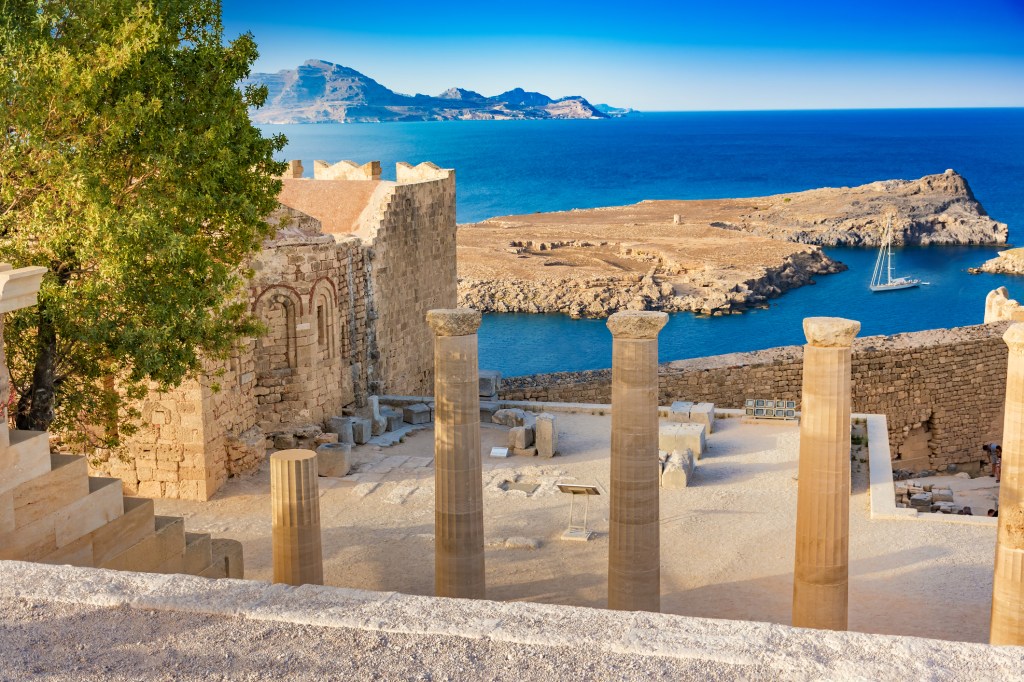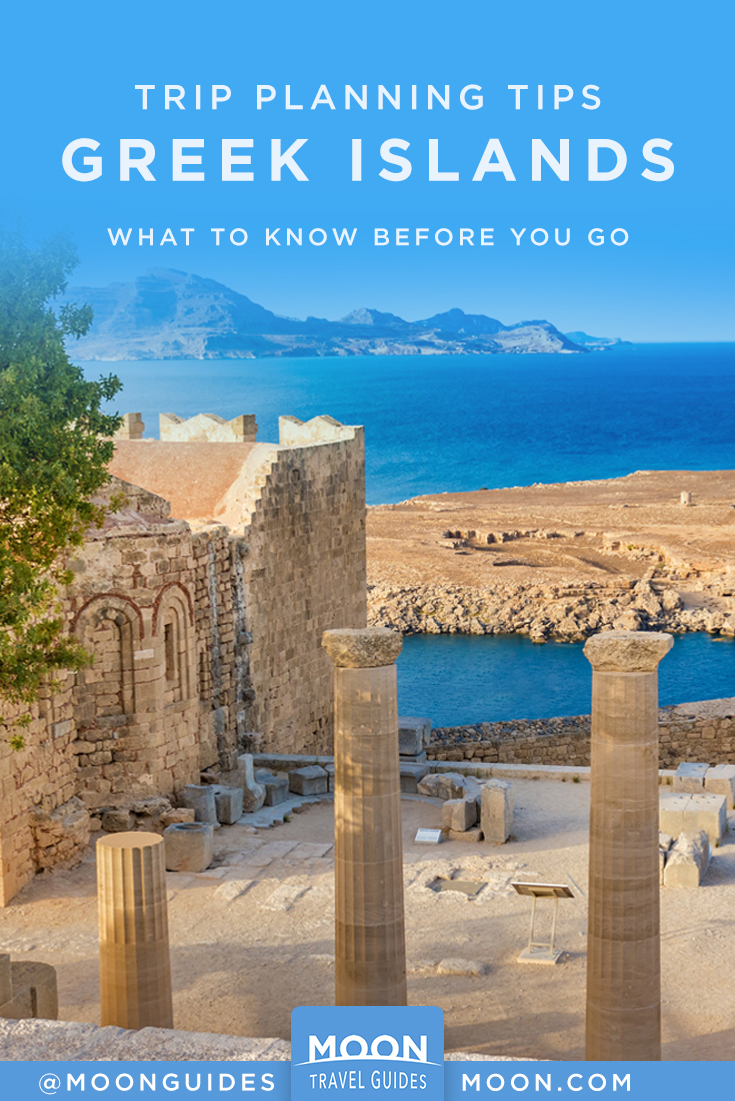Planning a Trip to the Greek Islands
With their stunning beaches, picturesque landscapes, and inviting atmosphere, it’s no wonder the Greek Islands attract millions of visitors every year. Dreaming up plans for a trip in the years to come? We’ve got you covered on the basics:

When to Go
High Season (June-August)
Summer, when temperatures (and prices!) soar, is the high season in Greece. If you’re going to travel during this time, be prepared to make plenty of reservations and wait in lots of lines, especially if you’re going to blockbuster islands like Mykonos, Santorini, or Crete.
Shoulder Season (April-May and September-October)
The months bookending the summer season (particularly May and September) are great times to visit the islands. The crowds aren’t so intense, the weather is mild but warm enough to enjoy the beaches and you’ll be able to snag reservations that would be impossible in mid-August.
Low Season (November-March)
Only islands with larger populations, like Crete, Lesvos, and Corfu, have plenty of restaurants, stores, museums, etc. that stay open all year. Some islands might be worth visiting for specific holidays. Skyros, for example, has a great festival during pre-Lent Carnival, but try going to Anafi in November and you’ll be sorely disappointed.

Know Before You Go
Passports & Visas
You’ll need a valid passport to enter Greece (or an I.D. card if you’re coming from another EU country). Greece is part of the Schengen zone, so Americans, Australians, Canadians, and Brits are granted three months to travel around without applying for a visa. If you wish to stay longer, you’ll need to get a six-month tourist visa from your country’s Greek embassy.
Vaccinations
You don’t need to take any specific vaccines to come to Greece, but when traveling, it’s a good idea to be up to date on all your shots. Greece does have free healthcare, so if you run into any medical issue and you don’t have insurance, rest assured that you’ll be treated properly and humanely in the hospitals. Both vaccinated and non-vaccinated travelers are currently allowed to travel in Greece, albeit with restrictions.
Transportation
Air
Depending on which island you’re visiting, it can be convenient to fly directly to that island’s airport or to the Eleftherios Venizelos Airport in Athens. From Athens you can connect to islands through the domestic airlines. Depending on which island you’re visiting, your flight from Athens will take around 45 minutes to an hour.
Boat
A comprehensive ferry system travels between the islands and the mainland ports. To get to Crete, the Cycladic islands, and the Dodecanese islands you’ll go from Piraeus port near Athens. There are also two other ports, Rafina and Lavrio, with service to Cycladic islands.
For the Ionian island of Corfu, you will leave from Igoumenitsa port. For Zakynthos, you will leave from Kyllini or Patras. Lefkada is not accessible via mainland port; most travelers drive or fly to reach this destination.
To get to the Sporades island of Alonnisos, you’ll need to leave from Volos. It’s also possible to reach Alonnisos from Agios Konstantinos and Kymi in Evia. Skyros, another Sporades island, is only reachable from Kymi.
In terms of the Northeast Aegean Islands, boats for Lesvos and Ikaria leave from Piraeus; to get to Samothrace you must fly first to Alexandroupoli in the northeast of the country.
What to Take
Greeks are a pretty chic bunch, and you’ll look out of place with rumpled shirts and cut-off jeans. Pack a few nicer summer outfits, especially if you’re spending time on Mykonos, Santorini, or Crete. Choose breathable fabrics like linen and cotton, and pack at least one pair of sandals and one pair of sturdy shoes for walking. Women should bring a modest outfit that covers the knees, shoulders, and chest for visiting churches.
If you’re going to do a lot of walking or hiking, bring hiking shoes, a hat, and a couple of pairs of socks. You can buy granola bars and water bottles in Greece. Most of the islands don’t have drinkable tap water, so it won’t help to bring a reusable water bottle unless it has a water filter. If you want to cut down on plastic waste, bring a reusable water bottle that can filter water. You can buy snorkel gear, like masks and flippers, on the spot (a snorkel mask costs about €10), but it’s useful to bring your own beach towel. Most accommodations have towels, but they don’t always have towels specifically for the beach, and you might be charged if you forget to bring it back to the hotel.
You’ll want to bring a phone charger, power adapter, credit and debit cards, and your driving license if you’re planning on renting a vehicle. Outlets take either Type C 220V/50Hz or Type F 230V/50Hz standard European plugs (two round prongs). Get an electronic converter that adapts to both for any devices that are not dual voltage. If you’re prone to seasickness, it’s a good idea to bring some medicine, as well as mosquito repellent and plenty of sunscreen. Add a hat and some sunglasses and you’re good to go.
Start planning your adventure today.
By clicking ‘Sign Up,’ I acknowledge that I have read and agree to Hachette Book Group’s Privacy Policy and Terms of Use
What to read next:
Pin it for Later




